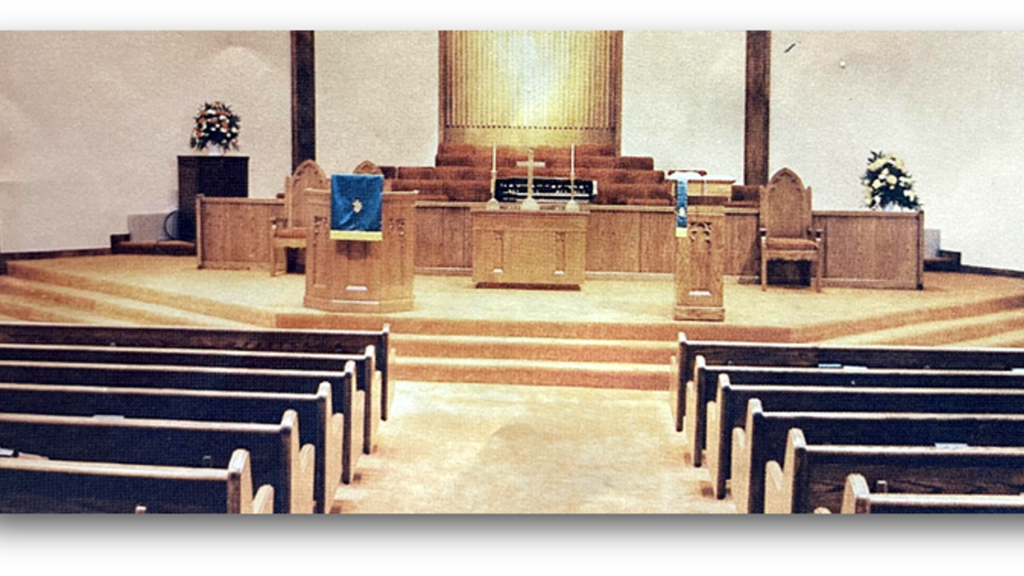Witherspoon History
For over a century, Witherspoon Presbyterian Church has been a citadel of hope and a refuge for people in search of solace, love and care. We are honored to continue in that tradition a century later.
Almost before the smoke had cleared away and the roar of Civil War cannon had hushed, the United Presbyterian Church of North America was on the field in the Southland, working among the Freedmen. The Southern states had done little, if anything, at this time in the way of establishing schools for the education of the Negro. The United Presbyterian Church with its strong missionary spirit, however, established schools in Tennessee, Alabama, Georgia, Virginia and North Carolina.
Knoxville College was the first of these schools established. From this center, trained workers were sent out to the mission fields of the states mentioned. As the years went by, students of Knoxville College as well as teachers and students of some of the mission schools came north to further their education and to seek better living conditions. Witherspoon Presbyterian Church can trace its history as far back as 1896 to the Ninth Street Presbyterian Church. The first of a Knoxville College group arrived in Indianapolis in 1896; and during the ten years that followed, others came from the United Presbyterian missions of Athens, Tennessee, and Henderson, North Carolina, and a little later from other mission schools of the South. Being Presbyterian by faith these young people, for the most part, joined the Presbyterian Church of Indianapolis. Many of them became loyal members of the old Ninth Presbyterian Church on Michigan Street.
About 1906 the Presbytery came to the conclusion that the Ninth Street church was not making sufficient progress to warrant the continuance of the outlay of money necessary to its maintenance. Consequently, in 1906 the Presbytery decided to withdraw its support from the Ninth Street Presbyterian Church. After a difference of opinion, the Ninth Street Church became two: the Fourteenth Street Presbyterian Church (Saint Paul Presbyterian Church) at 14th and Senate Avenue and another on Camp Street (Camp Street Presbyterian Church).
Believing that was the end of the Ninth Presbyterian Church of which some United Presbyterians had been members for 10 years, two young men, Henry W. Cleage and H. L. Hummons, M.D., consulted Dr. J. P. Cowan, pastor of the Woodruff Avenue United Presbyterian Church and a senior member of the Indiana Presbytery, concerning the establishment of an organization for Negro people. The group found in Dr. Cowan just the kind of encouragement that was needed to give leaders the inspiration to push on. Through his encouragement and effort a committee from the Presbytery met at the office of Dr. Hummons to discuss the feasibility of establishing a United Presbyterian congregation. All of the members present were heartily in favor of and encouraged this organization. On April 30, 1907, the Presbytery of Indiana of the United Presbyterian Church held a called meeting at Realty Hall in response to a petition signed by 31 persons asking to be organized into a United Presbyterian congregation. Prof. David Graham of Rushville was moderator and The Reverend W. W. McCall of Greensburg was secretary. The petition was approved by unanimous vote and in April 1907 the Camp Street congregation became known as Witherspoon Presbyterian Church.

Witherspoon Presbyterian Church was named after The Reverend John Witherspoon. A Presbyterian, he was the only clergyman to sign the Declaration of Independence and was known for his work in the growth of the Presbyterian Church. Reverend Witherspoon was also responsible for publishing two American editions of the Bible.
In 1937 Witherspoon and St. Paul churches agreed to merge as Witherspoon United Presbyterian Church. In 1937 Witherspoon purchased the property at 25th & Paris Avenue, which housed St. Paul Presbyterian Church, (previously named Ninth Presbyterian Church). In 1968 the church moved to a new building at 5136 N. Michigan Road since the old church structure at Paris Avenue and 25th Street was displaced by a part of Interstate 65 North. In 1983, the United Presbyterian Church in the U.S.A. (UPCUSA) and the Presbyterian Church in the United States (PCUS) rejoined to form the Presbyterian Church (U.S.A.). Witherspoon Presbyterian Church is a member of Whitewater Valley Presbytery, Synod of Lincoln Trails, Presbyterian Church (U.S.A.) (PCUSA).
- The Reverend Dr. J. P. Cowan, April 30, 1907 – August 1907
- The Reverend C. W. McCall, August 1907-1908
- The Reverend D. F. White, August 1908-August 1911
- The Reverend Dr. John Brice, September 1912 – September 1918
- The Reverend C. H. Johnson, September 1918
- The Reverend A. J. Clarke, 1920-1926
- The Reverend D. F. White, 1926-1936
- The Reverend Thomas L. Grandy, 1936-1945
- The Reverend A. J. Clarke, 1945-1946
- The Reverend Dr. Clinton M. Marsh, 1946-1963
- The Reverend Geddes Hanson, June 1964-1966
- The Reverend Landrum Shields, 1966-1967
- The Reverend Landrum Shields, 1967-1994
- The Reverend Dr. Charles Marks, Designated Pastor, 1995-1998
- The Reverend Cornelius Berry, 1999-2003
- The Reverend Dr. Larry Bryant Parker, 2007-2014
- The Reverend Fernando Rodriguez, 2014-2016
- The Reverend Dr. Winterbourne Harrison-Jones, 2017 – current
- The Reverend Dr. Winterbourne Harrison-Jones, 2023 – Present
During periods when there was not a permanent pastor on staff, Witherspoon has been blessed to have an array of competent, caring, spiritually enlightened pastors guide her congregation and programs:
- The Reverend Doctor Clinton M. Marsh – 1994
- The Reverend Ernest Newborn, Pulpit Supply – 1998-1999
- The Reverend Dr. John M. Thomas, Interim – 2004-2005
- The Reverend Carl Radford, Pulpit Supply, 2005-2006
- The Reverend Dr. Sylvester Lorenzo Shannon, Temporary Supply – 2006-2007

